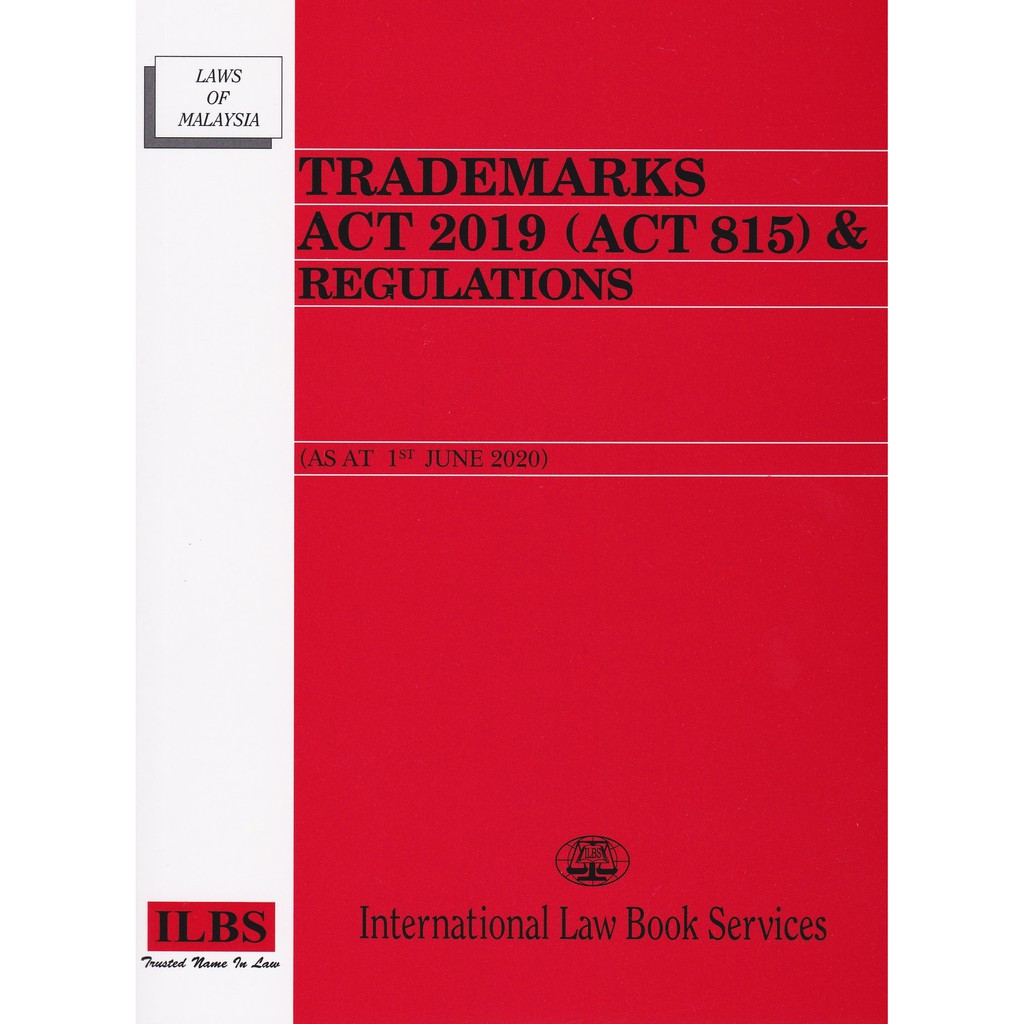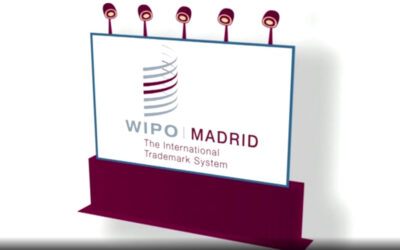Introduction
Ever since elected as a state assemblyman in Melaka in 2018, I have practically lost touch with the law especially in relation to my love, intellectual property laws particularly trademark laws. Blame it on being a political man, legal practice was literally put aside until the state election on 20th November 2021 where I lost the seat of Duyong by a mere 200 votes.
Realising that, I am back into practice with a giant in front of me, the new Trademarks Act 2019 which came into effect on 27th December 2019 repealing the old Trade Marks Act 1976. I read the Act once, and did some application and registration following the new regime of the filing system. And that is it and I did not put in any thoughts until I have to speak in a seminar in Genting organised by the Malaysian Franchise Association.
Thus, the re-reading of the Act just now and I began to realise that I am truly far behind and needed the catching-up of the law.
The much-awaited new Trademarks Act 2019 and the Madrid Protocol
Many IP specialists and friends wrote about the Act. Claiming it as the “the much awaited new Trademarks Act 2019” due to the fact that many internationally brand owners and lawyers look forward (or not) to this change as it will have a far reaching effect in the trademark landscape in particularly the registration process, infringement action and the do-away with the Trade Description Order under the Trade Description Act 2011, the registration of non-traditional trademarks that are new in countries like ours that adopted the Madrid Protocol. Great change to the system will definitely create far reaching hiccups as well whether in the registration systems or whether filing in the Malaysian Courts for infringement cases.
Before I take you to the so-called much awaited Trademarks Act 2019 (TMA2019), one will have to understand the Madrid Protocol. Google it up, you will find the Wikipedia understanding of the Madrid System that gives you some insight in relation to the Protocol.
Historically, it goes back to 1891 before this country of ours achieved independence. It is known as the Madrid Agreement Concerning the International Registration of Marks of 1891. It is a multilateral treaty culminating to the Protocol Relating to the Madrid Agreement of 1989.
Though the Madrid Protocol provides a centrally administered system in Geneva, of obtaining a bundle of trademark registrations in separate jurisdictions it does not create a unified registration. Madrid provides a mechanism for obtaining trademark protection in many countries around the world which is more effective than seeking protection separately in each individual country or jurisdiction of interest. However having said that, one need to note that claimant is to file actions in court separately for infringement in a particular jurisdiction. The laws in that particular country is always the law of that land.
The Madrid Protocol system provides for the international registration of trade marks by way of one application that can cover more than one country. The opportunity of having a single registration to cover a wide range of countries gives advantages, both in terms of portfolio management and cost savings, as opposed to a portfolio of independent national registrations.
It gives brand owner priority and claims against another, however it is worth to note that it DOES NOT give brands owners an INTERNATIONAL TRADEMARK per se but a mechanism that would allow for a single and inexpensive international trademark registration and to eliminate the need for filing, prosecuting or maintaining separate registrations in multiple countries.
What are the NEWs in the TMA2019
Trade Description Act 2011 (TDA2011)
My first thought was, what about the Trade Description Act 2011 (TDA2011) especially section 8 of the 2011 Act which specifically mention the old Trade Marks Act 1976. The old Act did not mentioned provisions for criminal enforcement or penalties against counterfeiting and infringement, thus the Trade Description Act 2011 by allowing an applicant ie a registered trademark owner to file an ex-parte application under section 9 of the TDA2011 for an order that such goods or products are illegal and thus amount to a counterfeit goods or products.
Interestingly, reading the TMA2019, the new Act consolidate civil and criminal enforcement, offences and penalties without the need to apply to the Court for a Trade Description Order. What is needed by the applicant is applying to the Registrar for a verification of the Trademark under section 112 of TMA2019 in particularly subsection 112(3) and (4).
I now paraphrasing 112(3) and (4) as follows, if the complaint made that a trademark which is not identical or confusing similar with the registered trademark, any registered proprietor or licensee shall obtain a Registrar’s verification in a form determined by the Registrar, with a prescribed fee, will be accepted as prima facie evidence in any legal proceedings such as an infringement action.
Having done many TDO matters, this would be a right step forward as it is fast more economical rather than filling an ex-parte application under the TDA2011, seizure done and thereafter TDO challenged by the offending party in Court which can be very expensive litigation process and time wastage by brand owners.
Interestingly, section 99 TMA2019 is worth noting as offending parties will some how cleverly altered, added, effaced, or partially removed registered trademarks. Section 99 allows Brand Owners to rely on it and if an offence committed, a fine of not more than RM1 million or to a term of imprisonment of not more than 5 years or to both.
Non-Traditional Trademarks
Another NEW I saw was the application and registration of non-traditional trademarks. Section 2 must be noted and compared to the section 3 of the Old TMA1976.
The old TMA1976 defined “mark” in section 3 includes a device, brand, heading, label, ticket, name, signature, word, letter, numeral or any combination thereof; whereas the TMA2019 section 2 define it as “sign” includes any letters, words, name, signature, numeral, device, brand, heading, label, ticket, shape of goods or their packaging, colour, sound, scent, hologram, positioning, sequence of motion or any combination thereof.
I did wonder, once upon a time, how would the Registrar store all these technical explanation and devises as non-traditional trademarks are not easily obtained or attained compared to before where application and registration would be easier as signs are capable of being represented more visually or vividly.
The TMA2019 does not mentioned how the marks/signs are ‘drafted’ but in looking at various entry in the Registry, it could be a melody that could include a jingles or a one-note sound, like the Samsung sounding Start-up Sound, Over the Horizon’s Samsung or the Metro Goldwyn Mayer (MGM) lion’s roar, or the Iphone ringtones.
Next, Scent, like all other trademarks, however, the scent must be capable of being represented graphically, there must be a written description of a particular scent. Scent of an agarwood or sandalwood oil for example, or rose. The others would be hologram, positioning or even a sequence of motion.
Toblerone Chocolate triangular prism packaging was filed under Class 30, its description reads: “The trademark consists of the three dimensional shape of a triangular packaging, word and device as illustrated in the representation attached to the application form”.
I am also impressed with the movie Transformer – Age of Extinction, where it shows the actor enters and exit building with particularly different sounds. That is non-traditional trademarks.
Non-traditional trademarks may therefore be visible signs (e.g. colors, shapes, moving images, holograms, positions), or non-visible signs (e.g. sounds, scents, tastes, textures).
There is no mentioned on defensive or associated mark anywhere in the New TMA2019 compared to the old TMA1976. Interestingly, TMA2019 dedicated “Well-known Trademarks” spelt in sections 4, 24, 76, 77 and 78.
Multiple Class Registration and Registration of Trademarks
Another new taken by the TMA2019 is section 18 under the heading Application in Multiple Classes. This makes administration of trademarks more efficient is allowing multiple classes to be designated within a single application compare to the previous need to file one application per mark, per class. Nothing in the Act or the said section mentioned about the maximum number of classes thus reducing lots of cost to the Trademark office and lawyers/agents.
Each classes, there is an additional RM50.00 per class in one application.
Please note also under the Act, the application date of a trademark shall be its filing date, regardless of the priority claimed. This one will have to read section 17 read together section 22(3), 26, 27 and 28. I may one to provide section 22(3) below:-
“Any date of priority claimed under section 26, 27 or 28, shall have no effect on the date of filing of application recorded under subsection (1) or (2) except for the purpose of search under section 29(2)
Upon successful registration of a trademark, a sealed notification will be issued by the Registrar thus doing away with the usual Certificate. However should the owner wishes to obtained a certificate of registration, a prescribed fee would have to be paid.
Conclusion
There many news under the TMA2019 to include in the areas of security assets in terms of assignments giving monetary value to the trademarks, infringements, quasi criminal action and many other areas not covered in this short article. Nevertheless, it is certainly challenging for Brand owners as well as Trademark Agents and Trademark lawyers. Trial and error will be the Day.




0 Comments